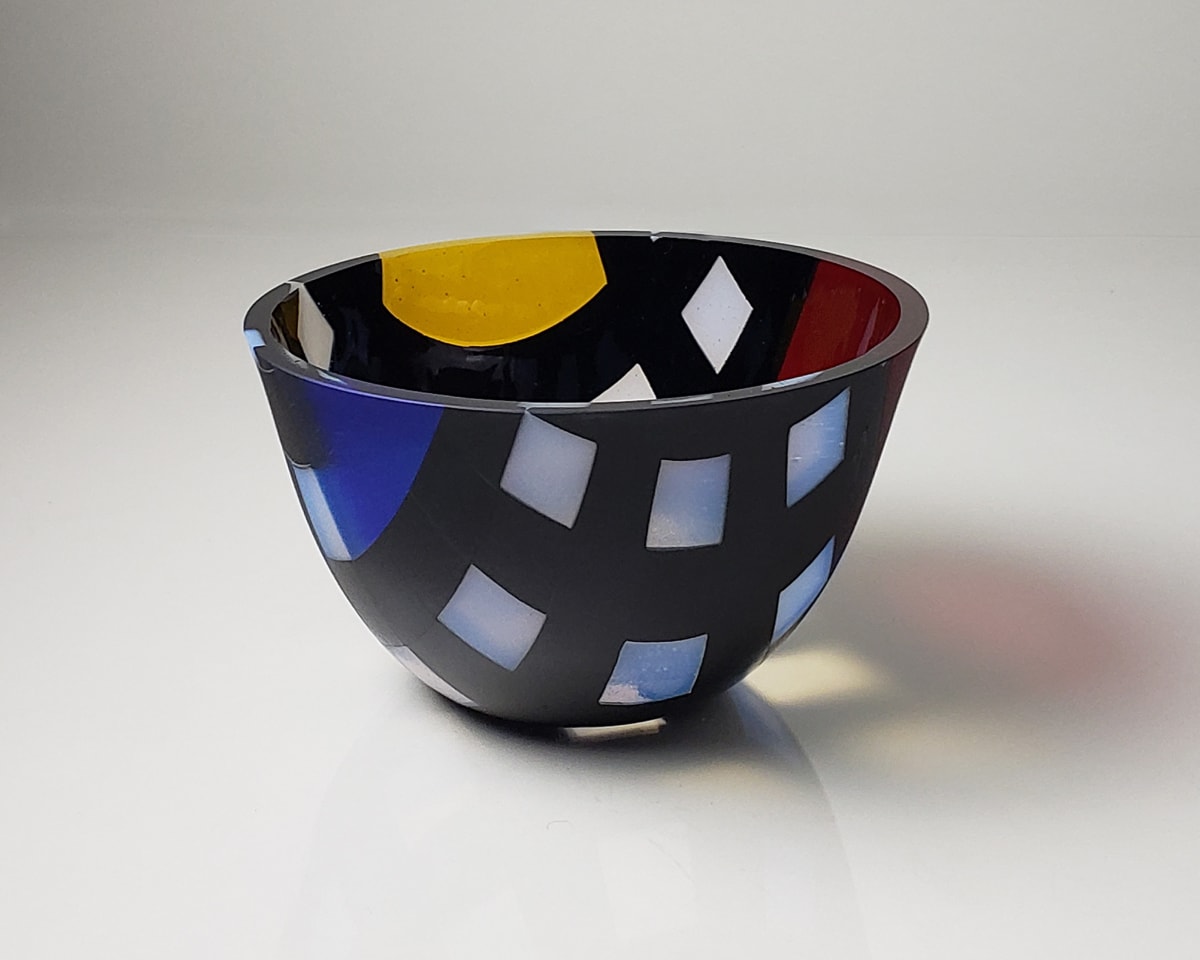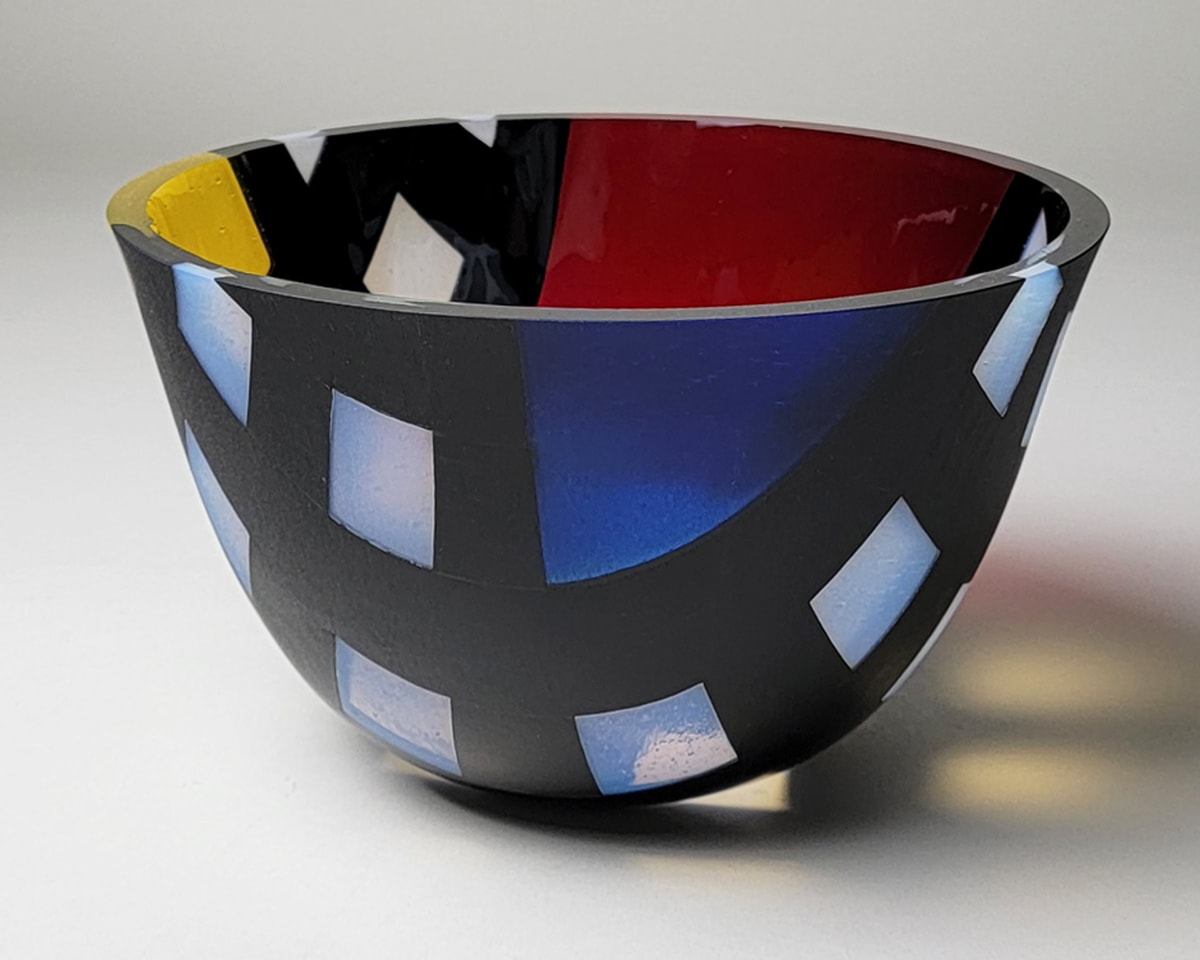
Counter-composition as a Vessel Open Edition
This kiln-fomed glass vessel features transparent rectangles of
primary colors and white set in a field of opaque black.
Created over six days, individual pieces are cut and then fused into a
disk at a temperature of 1450F. The disk is slumped in three steps in
progressively deeper molds to achieve the final shape. Each step is
closely monitored for shape, reaching into the 1200F kiln to adjust
the mold. The top of the vessel is cold worked and polished
A kilnformed glass adaptation of Theo van Doesburg's 1925 oil on
canvas painting "Counter-Composition XV". Maintaining the primary
colors and geometric abstraction of De Stijl while rejecting its strict
adherence to only horizontal and vertical lines Van Doesburg wanted
to give De Stijl more variety, movement, and energy than found in
Piet Mondrian's personal version of the movement, which was called
Neoplasticism. This small but crucial difference in his thinking led to
Van Doesburg and Mondrian's split in 1924.
